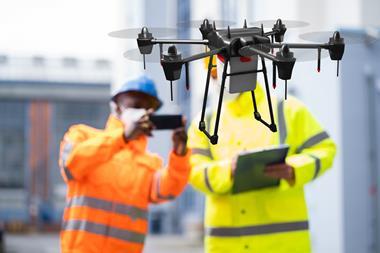Climate change was also cited as a key risk by the law firm
Drones, medical malpractice and cyber are the top technology-related risks for this year, according to international law firm DAC Beachcroft.
Its latest global insurance industry predictions lists technology as one of six key themes for 2022. Other important categories for this year are class action lawsuits, climate change, global risks, regulation and modernising the workplace.

The top risk regarding technology is drone deliveries - the law firm is confident these will be “making a buzz in UK skies”.
The other technology-linked risks the insurance sector needs to be aware of this year are casualty, construction and engineering, cyber and data, directors and officers and financial institutions, insurance wordings, marine, energy and transports, medical malpractice, motor, product safety, liability and recall.
Helen Faulkner, global head of insurance at DAC Beachcroft, said: “We hope insurers will find our insights valuable in planning for the future.
“There is a significant overlap in environmental, social and governance (ESG) issues that we are seeing emerge, which highlights a sweet spot on which to focus our attention in the year ahead to create a resilient industry of which we can all be proud.”
Impersonation fraud
Taking a closer look at cyber risks, DAC Beachcroft noted impersonation fraud on video conferencing platforms is a growing threat due to the increased use of Zoom and Microsoft Teams following the Covid-19 pandemic lockdowns.
This includes the use of deepfakes - this is where artificial intelligence and machine learning is used to modify images, video and audio recordings, for example, replacing a person’s face in an existing image with someone else’s likeness.
Ransomware and extortion attacks continue to impact businesses globally too.

In its predictions, which are published online, DAC Beachcroft said: “The impact of these attacks can be catastrophic, with losses arising from business interruption, the cost of restoring data and IT systems and reputational damage.
“Businesses have no guarantee that data will be deleted if the ransom is paid. Strong cyber security measures, reliable and rehearsed ransomware recovery plans and appropriate insurance will help mitigate against the risk of ransomware.”
The law firm highlighted that ransomware attacks over the course of 2021 “saw even more methods of leverage used by attackers to force organisations to pay out”.
Some of these included extorting employees, threatening customers, making personal calls to board members and distributed denial of services attacks - where multiple machines are operating together to attack one target.
Data theft
These risks also pose a threat to the medical malpractice market, due to the NHS digitising many of its channels - for example, offering video and phone consultations instead of face-to-face appointments.
DAC Beachcroft believe that cyber security and data theft remain a threat for the healthcare sector.
Likewise, the law firm feels that deepfakes could be an issue for the directors’ and officers’ (D&O) insurance market too, with hackers using synthesised images to manipulate the customer data that is held by financial institutions.












































No comments yet